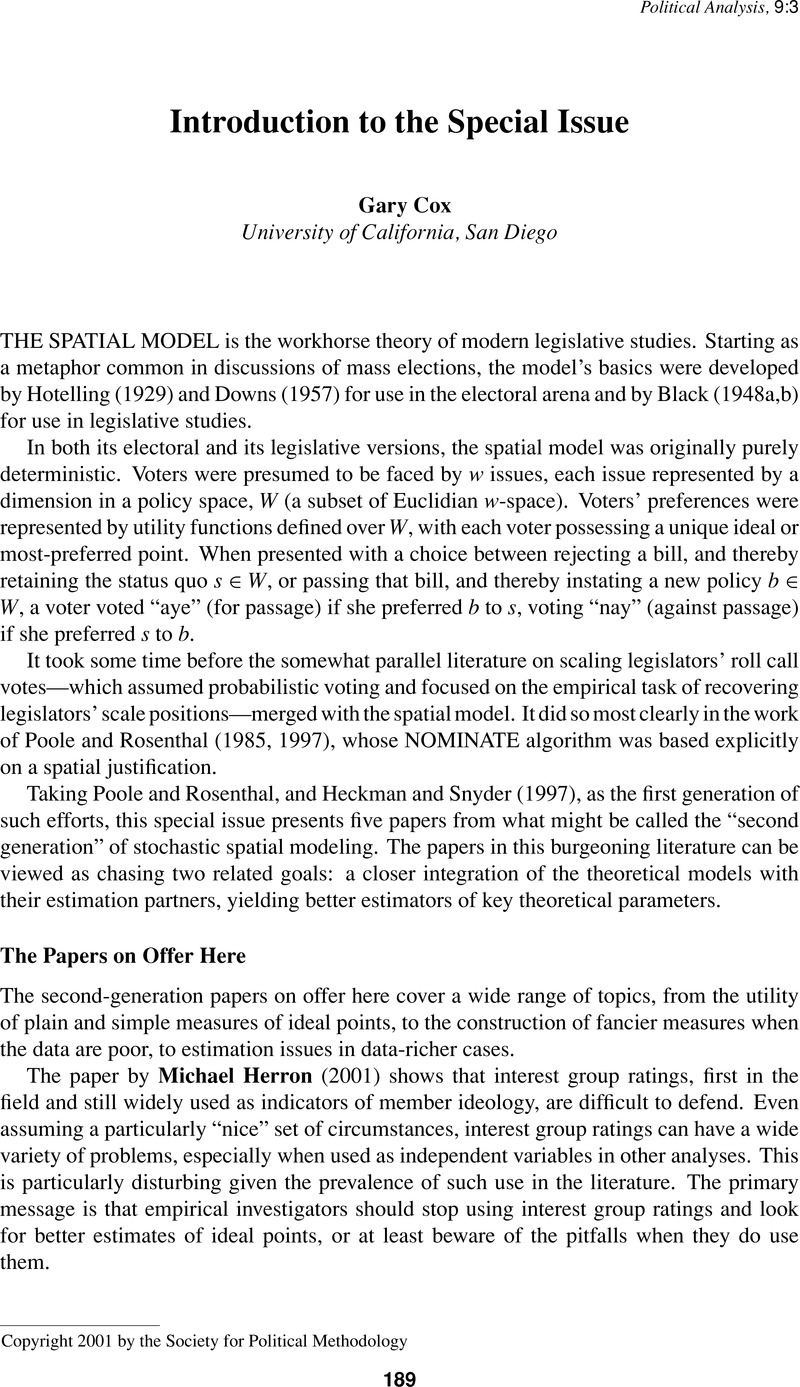Crossref Citations
This article has been cited by the following publications. This list is generated based on data provided by Crossref.
Ward, Michael D.
and
O'Loughlin, John
2002.
Spatial Processes and Political Methodology: Introduction to the Special Issue.
Political Analysis,
Vol. 10,
Issue. 3,
p.
211.
Ward, M.D.
2002.
The development and application of spatial analysis for political methodology.
Political Geography,
Vol. 21,
Issue. 2,
p.
155.
Laver, Michael
and
Schilperoord, Michel
2007.
Spatial models of political competition with endogenous political parties.
Philosophical Transactions of the Royal Society B: Biological Sciences,
Vol. 362,
Issue. 1485,
p.
1711.
Hansen, Martin Ejnar
2009.
The Positions of Irish Parliamentary Parties 1937–2006.
Irish Political Studies,
Vol. 24,
Issue. 1,
p.
29.
Magar, Eric
Estévez, Federico
and
Rosas, Guillermo
2010.
Partisanship Among the Experts: The Dynamic Party Watchdog Model of IFE, 1996-2010.
SSRN Electronic Journal,
Laver, Michael
Sergenti, Ernest
and
Schilperoord, Michel
2011.
Modelling Natural Action Selection.
p.
477.
Otjes, Simon
and
Louwerse, Tom
2014.
Spatial models in voting advice applications.
Electoral Studies,
Vol. 36,
Issue. ,
p.
263.
Jankowski, Michael
and
Marcinkiewicz, Kamil
2019.
Jahrbuch für Handlungs- und Entscheidungstheorie.
p.
33.
Nyhuis, Dominic
König, Pascal D.
Münchow, Felix
and
Shikano, Susumu
2023.
Deutschland und Europa im Umbruch.
p.
107.





